Understanding the Basics of an Income Statement: A Beginner’s Guide

While understanding Financial Analysis, an Income Statement is one of the most important components within Financial Statements.
It contains all the details about the profits and losses that are incurred by a company for a given time period.
In this article, I will be providing you with all the insights that you require to know about income statements, including their significance, examination, and everything that you need to know about keeping these records.
What Is An Income Statement?

An Income Statement mainly consists of all the costs, revenues, profits, and losses that a company incurs in a given period of time. Also known as a profit and loss statement or statement of sales and expenses, it aims to provide information about the operations of the company, management’s effectiveness, industries that are underperforming, and the company’s own performance compared to the competitors of its own kind.
Alongside the Balance Sheet and Cash Flow Statement, the income statement is considered one of the most important financial statements that help to calculate the financial; performance of a company.
Based on the operation of a business, an income statement is broken into time periods. The most typical monthly division is usually preferred for internal reporting, whereas specific businesses may utilize a thirteen-period cycle. The total values are thus created from these statements that help to calculate the quarterly and annual results.
Due to its requirement of the least amount of data, it is a great model to start your finances with, and hence, precedes its other two brothers in terms of information.
Income Statement Formula
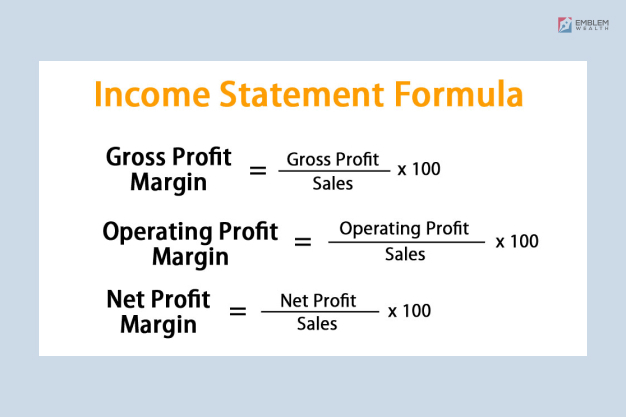
Calculating the net income from an income statement is one of the most straightforward processes.
Net Income= [Revenue + Profits] – [Expenses+Losses]
What Accounts Are Found On An Income Statement?
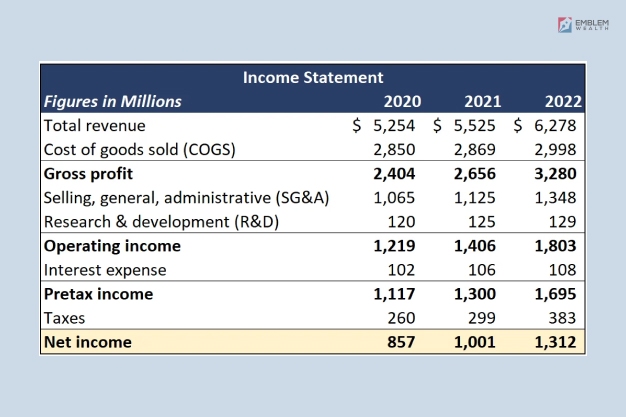
While creating an income account, or analyzing it, you must look for these undermentioned accounts:
- Revenue: the money received by a company in a reporting period.
- Expense: the money spent by a company during its reporting period.
- Cost Of Goods Sold[COGS]: the amount that is spent on manufacturing the products or services that a company sells.
- Gross Profit: calculated by deducting COGS from revenue.
- Operating Income: the difference between the gross profit and operating expenses.
- Before Tax Income: less non-functional expenses than operating income.
- Net Income: Earnings before tax.
- Earning Per Share[EPS]: divide net income by the number of outstanding shares.
- Depreciation: the loss of value in assets over time.
- EBITDA: all the earnings before interest, tax, depreciation, and amortization.
Importance Of Income Statement
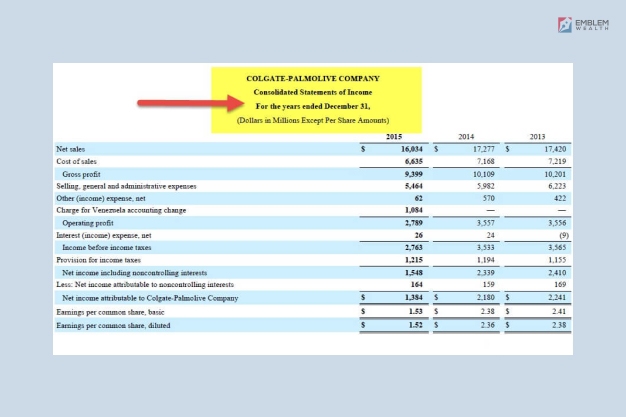
The income statement helps companies determine if they can create profit by increasing sales, reducing expenses, or both. Alongside this, it also illustrates the plan for the success of companies that were created at the start of a fiscal year.
Accordingly, business owners can use this statement to determine if their strategies worked successfully and can come up with the finest methods of increasing their revenue based on their study.
Some of the additional benefits of an income statement are:
Frequent Reports: unlike other financial statements that only produce a report on an annual basis, an income generates reports on a monthly or quarterly basis. This helps stakeholders keep a close eye on the consistent growth and development of the company.
Identifying Expenses: This statement helps in identifying upcoming costs, any unpredicted loss incurred by the business, or any areas that exceeded the budget. Smaller businesses that are experiencing growth may witness more expansion of their expenses which include the cost of recruiting staff, advertising, purchasing supplies, etc.
Overview Of The Company: The income statement benefits investors by helping them to examine the company they want to invest in generally.
Purpose Of An Income Statement
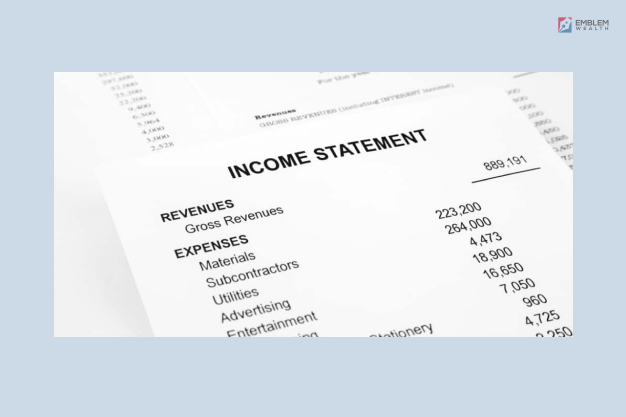
The core objective of an income statement is to display the financial success of a company over a given time frame. It produces the Financial Income Statement Accounts for a company’s operational activities.
You will find all the revenue and expenses that a company incurs in a specific time period in the income statement. Accountants use trial balances from any two points in time to construct an income statement.
Reviewing income statements regularly help business owners, accountants, and stakeholders to correctly measure how well the company is performing compared to its anticipated future performance and accordingly make the necessary adjustments to its course of action.
Income Statement Format
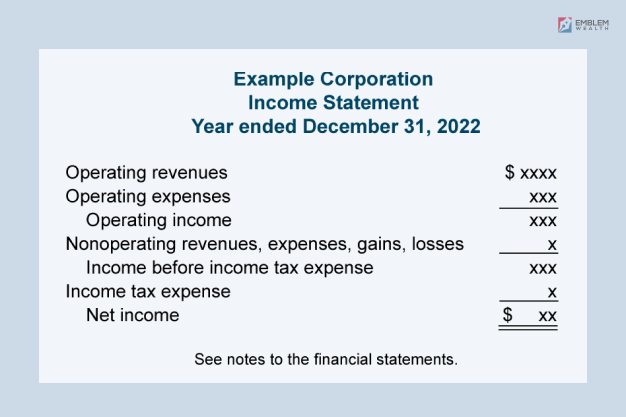
An income statement generally follows two formats-
- Single-step Income Statement
- Multiple-step Income Statement
The Single-step Income Statement is the most basic type of income statement that a business can follow. It is a simple, straightforward calculation where the revenue and gains are added, and the expenses and losses are deducted.
However, in the real world, businesses primarily engage frequently in mergers, partnerships, and acquisitions and have diverse business offerings. In that case, the income statement contains more detailed and intricate steps that cannot be sorted in a single step.
In such cases, a Multiple-step Income Statement Format is required. In a multiple-step format, different profitability metrics are reported at four different operational levels:
- Gross
- Operating
- Pretax
- After-tax
Analysis Of An Income Statement
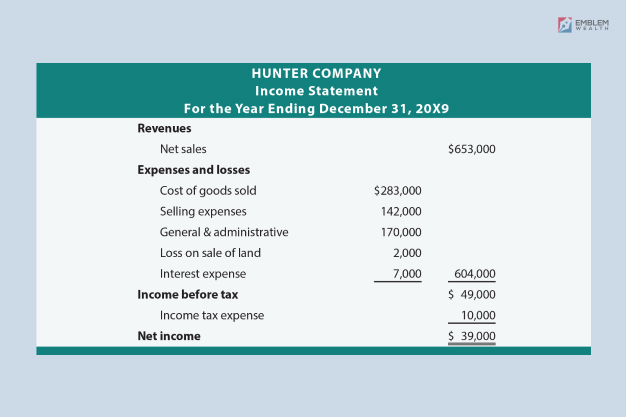
There are two systematic ways in which an income statement can be analyzed.
Vertical Analysis
It is a type of financial analysis where every item in the statement is listed as a percentage(%) of the original base amount.
Hence the line items on an income statement are referred to in percentages rather than expressed in exact dollar amounts.
Although vertical analysis is not always as effective as horizontal analysis, it can still give solutions to your questions regarding the increase or decrease of costs or which departments contribute the most to the profit margins.
Horizontal Analysis
It is just the opposite of a vertical analysis. Just as a vertical use the percentage of the base value of each line item, a horizontal analysis compares the changes in dollar values in the company’s financial statements throughout multiple reporting periods.
As per the generally accepted accounting principles[GAAP], horizontal analysis maintains consistency in financial data and reporting.
Due to this, horizontal analysis is valued more by analysts. It helps to identify the factors that contributed to the business’s financial performance over a given that helps to pinpoint the trends and growth patterns.
Conclusion
Any company’s Income Statement is a primary and precious source of information about the vital elements that contribute to its profitability. Because it is created more frequently than the other two statements, it helps businesses to fetch timely and consistent updates.
Explore More:

























Leave A Reply